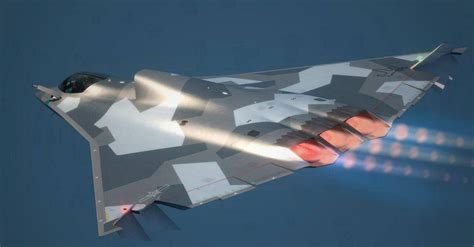
Scientists have detected a mysterious celestial object lurking in the outer reaches of our solar system, beyond Neptune, prompting debate whether it is a rogue planet or a unique, distant solar system body. The object, observed using data from the Atacama Large Millimeter/submillimeter Array (ALMA), has defied easy categorization, leading researchers to consider several possibilities about its nature and origin.
Astronomers are intrigued by the unusual characteristics of this object found far beyond Neptune, leaving them uncertain if it’s a free-floating planet or a peculiar body orbiting the sun at an extreme distance. The discovery, detailed in a new study, has fueled discussions within the scientific community, with ongoing observations aimed at unraveling the object’s secrets. Its potential classification as a rogue planet—a planet not gravitationally bound to any star—or an atypical member of our solar system underscores the complexities of planetary formation and the diverse range of celestial bodies populating our galaxy.
The object’s detection highlights the increasing capabilities of modern telescopes like ALMA, which allows scientists to probe the most distant and faint objects in space. As more data becomes available, researchers hope to determine the object’s precise composition, orbit, and ultimately, its place in the cosmic landscape. “This is a very intriguing object, and we’re excited to learn more about it,” said a lead researcher from the study.
The discovery process began with archival data from ALMA, a powerful telescope array in Chile known for its ability to detect faint signals from distant objects. Astronomers noticed a faint, moving object in the data that did not appear to be associated with any known star. After further analysis, they determined that the object was located far beyond Neptune, in the outer reaches of our solar system.
“The object is very faint, which makes it difficult to study,” explained one of the researchers involved in the project. “But we have been able to determine some of its basic properties, such as its size and temperature.” The object is estimated to be several times the mass of Earth and has a temperature of only a few degrees above absolute zero. Its size suggests it could be a planet, but its faintness indicates that it is not reflecting much light, raising questions about its composition and origin.
One possibility is that the object is a rogue planet, also known as a free-floating planet. These planets do not orbit a star and instead wander through space on their own. Rogue planets can form in a variety of ways, such as being ejected from a young star system or forming independently in interstellar space. If the object is indeed a rogue planet, it would be one of the closest ones ever discovered, providing a unique opportunity to study these elusive objects.
“Rogue planets are thought to be quite common in the galaxy, but they are very difficult to detect because they don’t emit much light,” said an astrophysicist not involved in the study. “This discovery could help us to better understand the formation and evolution of these planets.”
Another possibility is that the object is a distant and unusual member of our own solar system. There are many known objects in the outer solar system, such as dwarf planets like Pluto and Eris, as well as a large population of smaller objects known as Kuiper Belt objects. If the object is part of our solar system, it would be one of the most distant objects ever discovered, orbiting the sun at a distance of hundreds of times greater than the Earth’s distance from the sun.
“If this object is part of our solar system, it would be a very interesting addition to our understanding of the outer solar system,” said a planetary scientist. “It could provide clues about the early history of the solar system and the processes that shaped its formation.”
Determining the true nature of the object will require further observations and analysis. Astronomers plan to use other telescopes, such as the James Webb Space Telescope, to study the object in more detail. These observations could help to determine its composition, orbit, and other properties that could shed light on its origin. “We are excited to see what we can learn about this object in the future,” said one of the researchers. “It has the potential to tell us a lot about the formation and evolution of planets and solar systems.”
The discovery of this mysterious object highlights the ongoing exploration of our solar system and the vastness of space. As technology advances, astronomers are able to probe deeper into the cosmos and discover new and intriguing objects that challenge our understanding of the universe.
Further Investigations and Implications
The enigma surrounding this distant object extends beyond its mere classification. Scientists are intensely focused on determining its orbital path, which will offer vital clues about its origin and relationship to our solar system. If the object follows a highly eccentric orbit, it could support the hypothesis that it is a rogue planet captured by the sun’s gravity. Alternatively, a more regular orbit would suggest it formed within our solar system, perhaps as part of a population of objects ejected during the early stages of planetary formation.
The object’s composition is another critical area of investigation. Spectroscopic analysis, which involves studying the light reflected or emitted by the object, could reveal the presence of various elements and compounds. This information could provide insights into the conditions under which the object formed and whether it shares any similarities with known planets or asteroids. For instance, the presence of volatile compounds like water ice or methane could suggest it formed in a cold, outer region of a protoplanetary disk.
Furthermore, the discovery of this object has implications for our understanding of the overall architecture of the outer solar system. It raises questions about the potential existence of other undiscovered objects lurking in the darkness beyond Neptune. Some scientists have proposed the existence of a hypothetical “Planet Nine,” a large, unseen planet that could be influencing the orbits of other outer solar system objects. While the newly discovered object is unlikely to be Planet Nine, its existence highlights the possibility that our solar system is more complex and diverse than previously thought.
“The discovery of this object is a reminder that we are still exploring our solar system and that there are many mysteries yet to be solved,” said a senior astronomer at a leading research institution. “It underscores the importance of continued investment in astronomical research and the development of new technologies that can help us to probe the depths of space.”
The Role of ALMA in Deep Space Exploration
The Atacama Large Millimeter/submillimeter Array (ALMA) has played a pivotal role in the detection of this distant object. Located in the Atacama Desert of northern Chile, ALMA is one of the most powerful telescopes in the world, capable of observing the universe at millimeter and submillimeter wavelengths. These wavelengths are particularly well-suited for studying cold, distant objects that emit very little visible light.
ALMA’s high sensitivity and resolution have allowed astronomers to detect faint signals from objects that would be invisible to other telescopes. In the case of the newly discovered object, ALMA was able to detect the faint thermal emission from its surface, even though it is located billions of kilometers from Earth.
“ALMA is revolutionizing our understanding of the universe,” said the director of the ALMA observatory. “Its ability to observe the cold, dark regions of space is opening up new frontiers in astronomy and allowing us to discover objects that were previously hidden from view.”
ALMA’s capabilities are not limited to detecting distant objects in our solar system. It is also being used to study the formation of stars and planets in other star systems, as well as the evolution of galaxies throughout cosmic history. Its contributions to astronomy are expected to continue for many years to come, as scientists use it to explore the universe in unprecedented detail.
Comparison with Other Rogue Planets and Distant Solar System Objects
To better understand the nature of the newly discovered object, it is helpful to compare it with other known rogue planets and distant solar system objects. Rogue planets are typically difficult to detect because they do not emit much light and are not gravitationally bound to a star. However, astronomers have discovered a number of rogue planet candidates in recent years, using a variety of techniques.
One of the most promising rogue planet candidates is PSO J318.5-22, a gas giant planet located about 80 light-years from Earth. PSO J318.5-22 was discovered using data from the Pan-STARRS telescope in Hawaii and is estimated to be about six times the mass of Jupiter. It is relatively young, only about 12 million years old, and is still glowing from the heat of its formation.
Another notable rogue planet candidate is CFBDSIR2149-0403, a much smaller and fainter object discovered using data from the Canada-France-Hawaii Telescope. CFBDSIR2149-0403 is estimated to be about four to seven times the mass of Jupiter and is located about 100 light-years from Earth. It is thought to be much older than PSO J318.5-22, perhaps as old as 50 to 120 million years.
In comparison to these rogue planet candidates, the newly discovered object in our solar system appears to be smaller and fainter. Its estimated mass is only several times the mass of Earth, making it much smaller than a typical gas giant planet. Its faintness suggests that it is either very cold or has a very low albedo, meaning that it reflects very little light.
If the object turns out to be a distant member of our solar system, it would join a growing list of objects that have been discovered in the outer solar system in recent years. These include dwarf planets like Pluto, Eris, Makemake, and Haumea, as well as a large number of smaller Kuiper Belt objects.
The discovery of these objects has revolutionized our understanding of the outer solar system and has led to the reclassification of Pluto as a dwarf planet. It has also raised questions about the potential existence of other large, undiscovered objects in the outer solar system, such as Planet Nine.
Theories on the Origin of Rogue Planets
The origin of rogue planets is a subject of ongoing debate among scientists. Several theories have been proposed to explain how these planets form and end up wandering through space on their own.
One theory is that rogue planets form in protoplanetary disks around young stars, just like normal planets. However, instead of settling into stable orbits around their star, they are ejected from the system due to gravitational interactions with other planets or stars. This process is known as dynamical ejection and is thought to be a common occurrence in young star systems.
Another theory is that rogue planets form independently in interstellar space, through a process known as gravitational collapse. In this scenario, a dense cloud of gas and dust collapses under its own gravity, forming a planet-like object. This process is similar to the way that stars form, but on a much smaller scale.
A third theory is that rogue planets are actually failed stars, also known as brown dwarfs. Brown dwarfs are objects that are more massive than planets but not massive enough to sustain nuclear fusion in their cores, like stars do. They are often referred to as “failed stars” because they never quite make it to stardom.
It is possible that rogue planets form through a combination of these processes. Some rogue planets may be ejected from star systems, while others may form independently in interstellar space or as failed stars. The relative importance of each of these processes is still unknown and is an area of active research.
The Future of Research on Distant Solar System Objects
The discovery of the mysterious object beyond Neptune is just the beginning of what promises to be a fascinating era of research on distant solar system objects. As technology continues to improve, astronomers will be able to probe the outer reaches of our solar system in greater detail and discover even more intriguing objects.
Future telescopes, such as the Extremely Large Telescope (ELT) and the Nancy Grace Roman Space Telescope, will have the power to observe these objects with unprecedented sensitivity and resolution. These telescopes will be able to measure the properties of these objects with much greater precision, allowing scientists to determine their composition, orbit, and origin with greater certainty.
In addition to ground-based and space-based telescopes, robotic spacecraft will also play a key role in the exploration of the outer solar system. Future missions, such as the planned Dragonfly mission to Saturn’s moon Titan and the Europa Clipper mission to Jupiter’s moon Europa, will provide valuable insights into the conditions and processes that shape these distant worlds.
The combination of these different approaches will undoubtedly lead to a wealth of new discoveries about the outer solar system and the objects that inhabit it. These discoveries will not only expand our understanding of our own solar system but also provide valuable insights into the formation and evolution of planetary systems throughout the universe.
“We are living in a golden age of planetary exploration,” said a leading space scientist. “The next few decades will be an incredibly exciting time for astronomy, as we continue to push the boundaries of our knowledge and discover new and amazing things about the universe.”
Frequently Asked Questions (FAQ)
Q1: What exactly is a rogue planet?
A: A rogue planet, also known as a free-floating planet or an interstellar planet, is a planetary-mass object that does not orbit a star. It wanders through space on its own. These planets can form in various ways, such as being ejected from a young star system due to gravitational interactions or forming independently in interstellar space from collapsing clouds of gas and dust.
Q2: How was this mysterious object beyond Neptune discovered?
A: The object was detected using archival data from the Atacama Large Millimeter/submillimeter Array (ALMA), a powerful telescope array in Chile. ALMA is particularly well-suited for detecting faint signals from distant, cold objects that emit very little visible light. Astronomers noticed a faint, moving object in the data that did not appear to be associated with any known star, leading to further investigation.
Q3: What are the possible explanations for what this object could be?
A: There are two main possibilities. First, it could be a rogue planet, a planet not gravitationally bound to any star and wandering through space. Second, it could be a distant and unusual member of our solar system, orbiting the sun at an extreme distance, possibly as part of the Kuiper Belt or a similar population of objects.
Q4: How does the size and temperature of this object compare to other known celestial bodies?
A: The object is estimated to be several times the mass of Earth and has a temperature of only a few degrees above absolute zero. Compared to rogue planet candidates like PSO J318.5-22, which is about six times the mass of Jupiter, this object is much smaller. Its faintness suggests that it is either very cold or has a very low albedo, meaning it reflects very little light.
Q5: What are the next steps in studying this object, and what information are scientists hoping to gather?
A: Astronomers plan to use other telescopes, such as the James Webb Space Telescope, to study the object in more detail. These observations could help to determine its composition, orbit, and other properties that could shed light on its origin. Scientists hope to learn whether it’s a rogue planet or a member of our solar system, understand its formation history, and gain insights into the architecture of the outer solar system and the prevalence of rogue planets in the galaxy.









